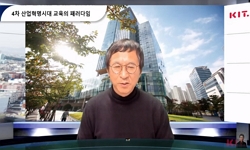Klaus Schwab announced the beginning of the some major advanced capitalist countries have started preparing for an era of revolutionary changes. As the major technical innovations of the fourth industrial innovation have consistently developed, ...
http://chineseinput.net/에서 pinyin(병음)방식으로 중국어를 변환할 수 있습니다.
변환된 중국어를 복사하여 사용하시면 됩니다.
- 中文 을 입력하시려면 zhongwen을 입력하시고 space를누르시면됩니다.
- 北京 을 입력하시려면 beijing을 입력하시고 space를 누르시면 됩니다.
https://www.riss.kr/link?id=T14739771
- 저자
-
발행사항
서울 : 연세대학교 대학원, 2018
- 학위논문사항
-
발행연도
2018
-
작성언어
한국어
- 주제어
-
발행국(도시)
서울
-
기타서명
A comparative analysis of policy responses to the fourth industrial revolution : government strategies in view of capitalism
-
형태사항
vi, 100 p. : 삽화 ; 26 cm
-
일반주기명
지도교수: 하연섭
-
UCI식별코드
I804:11046-000000515983
- 소장기관
-
0
상세조회 -
0
다운로드
부가정보
다국어 초록 (Multilingual Abstract)
Klaus Schwab announced the beginning of the some major advanced capitalist countries have started preparing for an era of revolutionary changes. As the major technical innovations of the fourth industrial innovation have consistently developed, it is expected that the fourth industrial revolution will influence every political, societal, and economic field in similar ways. However, each has invented different policy strategies with which to face the time of the fourth industrial revolution. Moreover, since conflicting perspectives concerning the fourth industrial revolutions have come to the fore, it is much more important to search for the fundamental causes responsible for creating these differences among the four countries.
Therefore, this study of comparative political analysis has focused on the United States of America, Germany, Japan, and Korea, which are classified as Liberal Market Economies (LME) and Coordinated Market Economies (CME). This study focuses on how the governments’ policy strategies differ and the major reasons behind the differences. Therefore, this study finds the premier causes from the specific features of the National Innovation System (NIS), and the fundamental causes from the institutions of each country’s productive regimes.
The analysis is based on the literature review of major government reports and several academic research papers. The analysis results show that each country has differentiated policy enforcement with the fourth industrial revolution, which results from the main sources of NIS; the way government provides support, relationships among innovation participants, and the technique infrastructures and its surrounding institutions such as industrial relations, education, vocational training, financial systems, and corporate governance. This is because institutional features and the National Innovation System determine the comparative advantages of national innovation strategies.
The results of this study clearly show meaningful implications for the Korean government. First, the government needs to escape the aspects of the developmental state and try to create more profitable innovation ecosystems. This could be made available by clearly setting major innovation participants(actors) and institutionalizing the relationships of its participants. Second, the priorities in its innovation policy must be clear to secure the competitive and comparative stages of the advantages. Meanwhile, the coordination of national institutions and policies should also be considered consistently.
Klaus Schwab announced the beginning of the some major advanced capitalist countries have started preparing for an era of revolutionary changes. As the major technical innovations of the fourth industrial innovation have consistently developed, it is expected that the fourth industrial revolution will influence every political, societal, and economic field in similar ways. However, each has invented different policy strategies with which to face the time of the fourth industrial revolution. Moreover, since conflicting perspectives concerning the fourth industrial revolutions have come to the fore, it is much more important to search for the fundamental causes responsible for creating these differences among the four countries.
Therefore, this study of comparative political analysis has focused on the United States of America, Germany, Japan, and Korea, which are classified as Liberal Market Economies (LME) and Coordinated Market Economies (CME). This study focuses on how the governments’ policy strategies differ and the major reasons behind the differences. Therefore, this study finds the premier causes from the specific features of the National Innovation System (NIS), and the fundamental causes from the institutions of each country’s productive regimes.
The analysis is based on the literature review of major government reports and several academic research papers. The analysis results show that each country has differentiated policy enforcement with the fourth industrial revolution, which results from the main sources of NIS; the way government provides support, relationships among innovation participants, and the technique infrastructures and its surrounding institutions such as industrial relations, education, vocational training, financial systems, and corporate governance. This is because institutional features and the National Innovation System determine the comparative advantages of national innovation strategies.
The results of this study clearly show meaningful implications for the Korean government. First, the government needs to escape the aspects of the developmental state and try to create more profitable innovation ecosystems. This could be made available by clearly setting major innovation participants(actors) and institutionalizing the relationships of its participants. Second, the priorities in its innovation policy must be clear to secure the competitive and comparative stages of the advantages. Meanwhile, the coordination of national institutions and policies should also be considered consistently.
국문 초록 (Abstract)
본 연구의 주요 목적은 4차 산업혁명에 대응하는 방식이 국가마다 어떻게 상이하게 나타나는지 살펴보고, 그 원인을 밝히는 것에 있다. 이에 본 연구는 국가별 차이의 원인을 일차적으로 서로 다른 특징적 국가혁신체계의 형성으로부터 모색하고자 하며, 근본적인 원인은 생산레짐의 제도적 특징에서 찾고자 하였다. 따라서 주요 정부 보고서와 민간 연구보고서를 중심으로 하는 문헌분석을 통해 4개국의 4차 산업혁명에 대응하는 정책 전략을 살펴본 후, 핵심 문헌들을 바탕으로 제도와 혁신체계의 결합 양상을 설명하였다.
연구 분석의 결과, 각 국가는 정부의 지원 양상과 혁신 주체의 관계, 그리고 기술 및 인프라로 구성되는 국가혁신체계 요소의 특징과 이를 둘러싸고 영향을 미치는 노사관계와 교육 및 기술훈련 제도와 금융제도 및 기업지배구조의 특징에 따라 제4차 산업혁명에 대하여 서로 다른 대응 정책을 추진하고 있다. 이에 조정시장주의로 분류되는 독일과 일본은 생산레짐과 국가혁신체계의 특징을 공유함으로써 4차 산업혁명에 대응하는 주요 정책의 어젠다와, 핵심 혁신 기술, 추진 주체 등을 비롯한 대응 정책의 특징이 유사한 방향으로 수렴하였다. 이는 근본적으로 제도적 특징과 국가혁신체계의 양상에 따라 급진적 혹은 점진적 혁신 전략의 비교우위가 달라지기 때문이다. 그러나 자본주의 분류 체계와 달리, 미국과 한국이 상이한 생산레짐의 특징에도 불구하고 유사한 대응 정책을 추진하는 것으로 나타났다. 이로부터 차별적인 혁신 전략안을 제도와 정책의 정합성에 비추어 추진하는 국가와 그렇지 못한 국가의 한계가 나타나는 것으로 볼 수 있다.
본 연구로부터 한국 정부의 제4차 산업혁명 대응 정책의 향후 전망에 대하여 도출되는 주요 함의는 다음과 같다. 발전국가적 면모에서 벗어나 효율적인 혁신 생태계를 형성하기 위하여 추진주체를 보다 명확히 하고, 혁신 주체의 관계를 제도화할 필요가 있다. 또한, 혁신 정책을 추진하는 특정 분야의 우선순위를 명확히 하여 경쟁적 비교 우위를 갖출 수 있어야 한다. 그 과정에서 정책과 제도의 정합성에 대한 고려가 지속적으로 요구된다.
2016년 세계경제포럼에서 클라우스 슈밥(Klaus Schwab)이 제4차 산업혁명의 도래를 공식적으로 선언한 이후, 주요 선진 자본주의 국가들을 중심으로 새로운 변화의 시대에 대한 준비가 시작되었...
2016년 세계경제포럼에서 클라우스 슈밥(Klaus Schwab)이 제4차 산업혁명의 도래를 공식적으로 선언한 이후, 주요 선진 자본주의 국가들을 중심으로 새로운 변화의 시대에 대한 준비가 시작되었다. 4차 산업혁명의 주요 혁신 기술의 발달에 따라 정치, 경제, 사회 분야에서의 유사한 변혁적 양상이 기대되었으나, 사실상 국가별로 제4차 산업혁명에 대응하는 정책 전략은 상이하게 나타나고 있다. 또한 4차 산업혁명의 영향에 관한 대립적 시각이 대두되는 가운데 4차 산업혁명 대응 정책의 차이를 형성하는 근원적 이유의 중요성에 주목하였다. 따라서 미국, 독일, 일본, 한국의 4개국을 자본주의 다양성 이론에 입각하여 자유시장주의 국가와 조정시장주의(산업기반, 그룹기반) 국가로 유형화하고 비교정책 분석을 시도하였다.
본 연구의 주요 목적은 4차 산업혁명에 대응하는 방식이 국가마다 어떻게 상이하게 나타나는지 살펴보고, 그 원인을 밝히는 것에 있다. 이에 본 연구는 국가별 차이의 원인을 일차적으로 서로 다른 특징적 국가혁신체계의 형성으로부터 모색하고자 하며, 근본적인 원인은 생산레짐의 제도적 특징에서 찾고자 하였다. 따라서 주요 정부 보고서와 민간 연구보고서를 중심으로 하는 문헌분석을 통해 4개국의 4차 산업혁명에 대응하는 정책 전략을 살펴본 후, 핵심 문헌들을 바탕으로 제도와 혁신체계의 결합 양상을 설명하였다.
연구 분석의 결과, 각 국가는 정부의 지원 양상과 혁신 주체의 관계, 그리고 기술 및 인프라로 구성되는 국가혁신체계 요소의 특징과 이를 둘러싸고 영향을 미치는 노사관계와 교육 및 기술훈련 제도와 금융제도 및 기업지배구조의 특징에 따라 제4차 산업혁명에 대하여 서로 다른 대응 정책을 추진하고 있다. 이에 조정시장주의로 분류되는 독일과 일본은 생산레짐과 국가혁신체계의 특징을 공유함으로써 4차 산업혁명에 대응하는 주요 정책의 어젠다와, 핵심 혁신 기술, 추진 주체 등을 비롯한 대응 정책의 특징이 유사한 방향으로 수렴하였다. 이는 근본적으로 제도적 특징과 국가혁신체계의 양상에 따라 급진적 혹은 점진적 혁신 전략의 비교우위가 달라지기 때문이다. 그러나 자본주의 분류 체계와 달리, 미국과 한국이 상이한 생산레짐의 특징에도 불구하고 유사한 대응 정책을 추진하는 것으로 나타났다. 이로부터 차별적인 혁신 전략안을 제도와 정책의 정합성에 비추어 추진하는 국가와 그렇지 못한 국가의 한계가 나타나는 것으로 볼 수 있다.
본 연구로부터 한국 정부의 제4차 산업혁명 대응 정책의 향후 전망에 대하여 도출되는 주요 함의는 다음과 같다. 발전국가적 면모에서 벗어나 효율적인 혁신 생태계를 형성하기 위하여 추진주체를 보다 명확히 하고, 혁신 주체의 관계를 제도화할 필요가 있다. 또한, 혁신 정책을 추진하는 특정 분야의 우선순위를 명확히 하여 경쟁적 비교 우위를 갖출 수 있어야 한다. 그 과정에서 정책과 제도의 정합성에 대한 고려가 지속적으로 요구된다.












